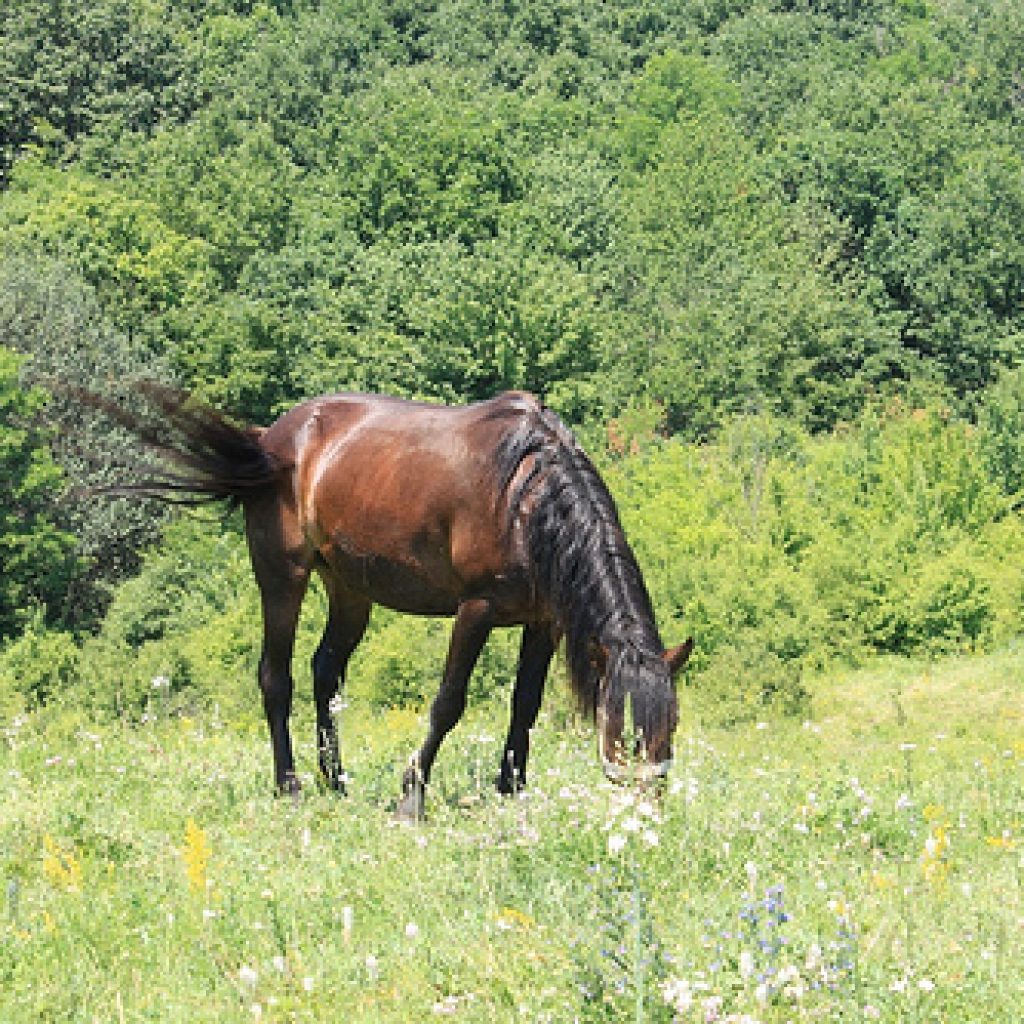
Today, our horses are living longer and healthier lives. With a longer life span we encounter additional challenges to keep our geriatric horses comfortable. One common condition in the older horse population is EOTRH (Equine Odontoclastic Tooth Resorption and Hypercementosis).

What is EOTRH?
EOTRH primarily affects the incisors, although canine teeth and cheek teeth can also be affected. The process is painful, with some teeth resorbing their roots and/or lying down extra cementum, which causes the roots to appear bulbous.
EOTRH is suspected based on dental examination and definitively diagnosed with radiographs. Some early signs of disease include recession and swelling of the gums. In more advanced cases, the incisors also become loose, with draining lesions around the gums. EOTRH is insidious and painful. Horse owners may notice that affected horses are sensitive to placing the bit in the mouth or become unwilling to grasp hard treats such as carrots. As prey animals, horses may only exhibit subtle signs of discomfort. The cause of EOTRH is unknown and the disease process may be underway before clinical signs are noted during an oral exam.
How is EOTRH treated?
Unfortunately, we lack treatments to prevent or stop EOTRH. Although it may seem drastic, extraction of affected teeth is the best way to manage this condition and keep horses comfortable. Because of the advancements in equine dentistry, extraction is often possible to perform in the field. Radiographs provide valuable information about the severity of disease and help your veterinarian plan for the extractions.
For extractions, the horse is be sedated and receives anti-inflammatories. Nerve blocks and local anesthesia are vital to minimize discomfort. Depending on the individual horse, extractions may be staged, with more severely affected teeth extracted first. Typically, EOTRH eventually affects all incisors, so horses having more severely diseased teeth extracted first may require additional extraction sessions.
After extraction, radiographs are used to confirm that no tooth fragments remain. Depending on how many teeth were removed, some veterinarians will close the gums with suture, although these often fall out within a few days. Post-op care includes a soft diet, anti-inflammatories, and antibiotics. Flushing the mouth with dilute chlorhexidine solution can also aid in healing.
What is the prognosis for EOTRH?
Horse owners observe that their horses are noticeably happier within just a few days of extraction- proof that EOTRH teeth are painful! Providing that the horse has adequate remaining cheek teeth, permanent dietary changes after extraction are not necessary. Without incisors, some horses may allow the tongue to stick out slightly, but are still able to graze and consume hay.








No comment yet, add your voice below!